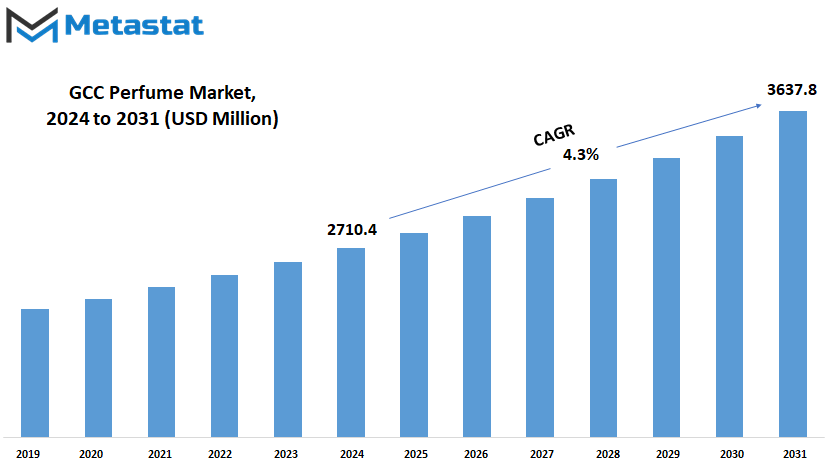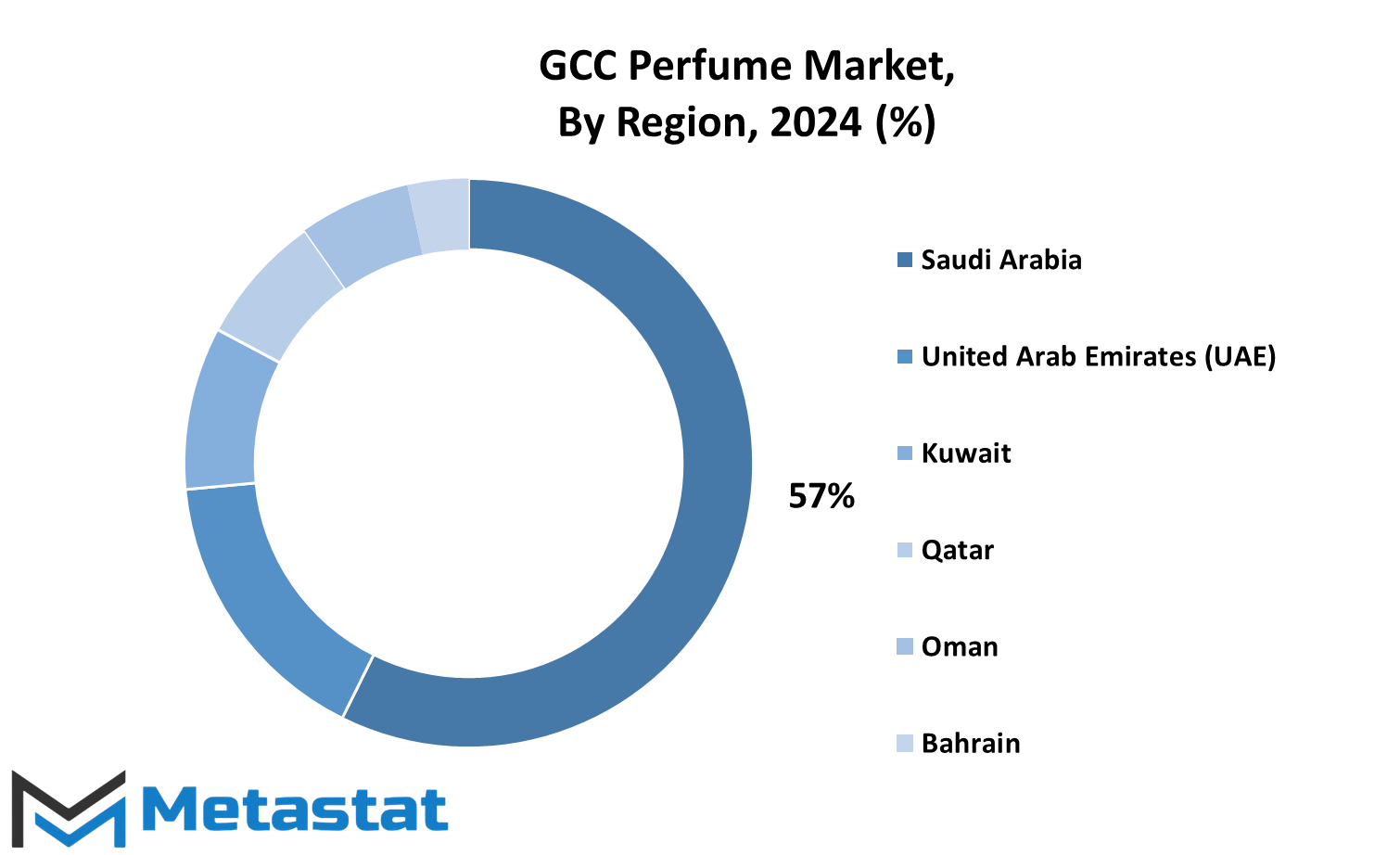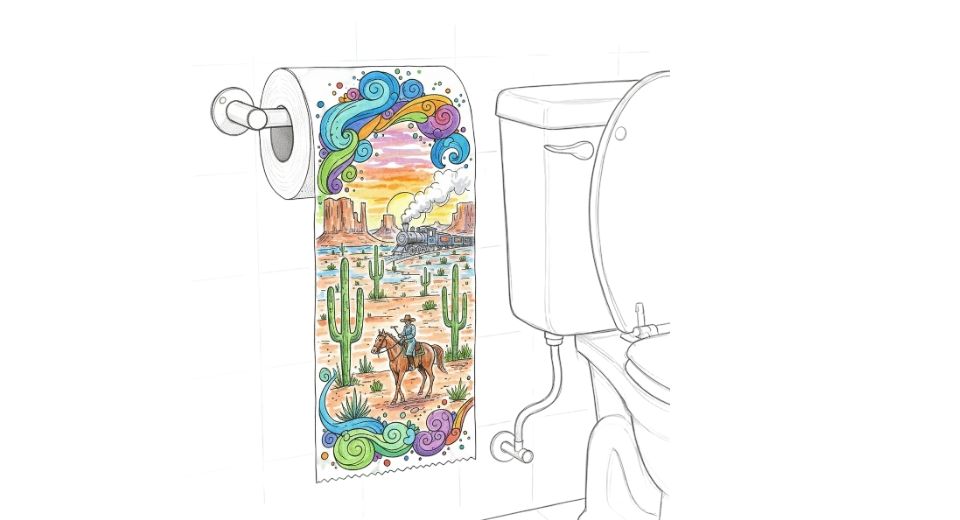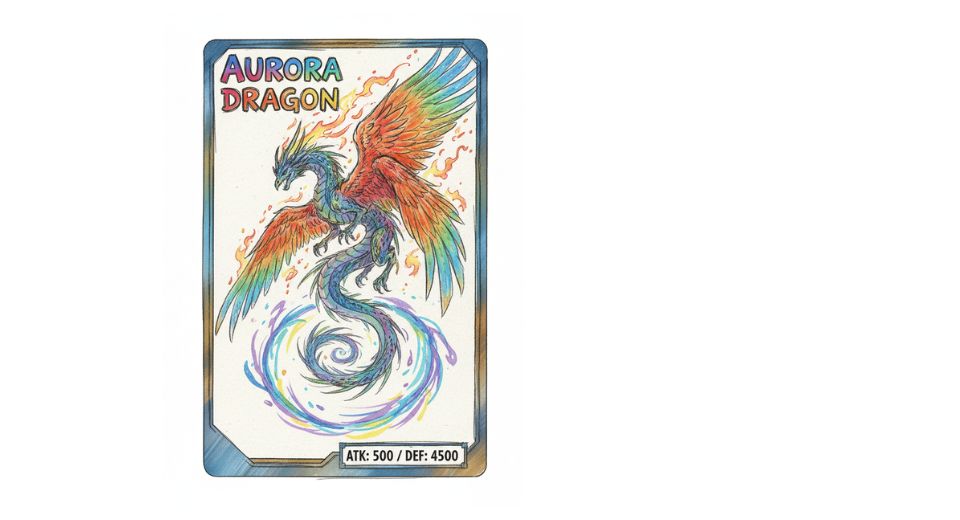MARKET OVERVIEW
The GCC Perfume market and the industry itself represent one of the most vibrant segments of the global fragrance sector, characterized by the harmony between cultural heritage and contemporary preferences. The market is shaped by a deep-rooted tradition of perfume usage merged with modern consumer trends in the context of the Gulf Cooperation Council countries. Perfumes in this region are not just a commodity but a vital aspect of both religious worship and personal hygiene as well as social expression. The GCC Perfume market stands out in the world of perfumery due to its synthesis of traditional Arabic scents like oud and musk with world-class innovations.
This market is defined by its long and colorful past of creating fragrances using locally sourced ingredients like oud wood and rose. These fragrances have been integrated into the culture of this region for centuries, changing consumer preferences and influencing the formation of product lines. Today, products based on these traditional products include these even as innovative technologies, which are integrated within market lines, reach a larger audience. The end result is a beautiful market that specifically unifies heritage with innovation, benefiting domestic consumers as well as international purchasers.
This market is rich in variety, ranging from concentrated perfumes to eau de parfums, and bakhoor, which is smoldered sanded wood chips or bricks in smoke for fragrance. Such diversity reflects the preferences of a consumer base that values personalization and exclusivity. The industry also witnesses active participation from both local and international brands, each wanting to offer something more recognizable to the GCC consumers with advanced tastes. The retail channels are also very diversified. From luxury boutiques to e-commerce platforms, this offers multiple different ways to expand into the market.
As the GCC perfume market will continue to reflect the aspirations and lifestyles of its consumers as it progresses, providing high-quality ingredients, the focus will be placed on sustainability and more innovative packaging for global excellence. With greater awareness among consumers, there will come a greater requirement for perfumes that have an intermix of natural and synthetic compounds to give people a unique olfactory experience. Brands would probably spend more on research to be able to provide perfumes to such a picky market.
Geographically, the GCC Perfume market enjoys a strategic location as an East-West crossroads. Apart from making trade easy convenient, this position allows the industry to derive influences from different cultures around the globe, making it an enriching industry. The events and festivals featuring both regional and international brands would also fuel growth in the market, establishing the GCC as a comprehensive perfumery hub globally.
The GCC Perfume market is not only an expression of regional traditions but is also an evolving industry. Shifting global tastes and consumer behavior will transform the GCC Perfume market, urging it to be innovative while still holding onto its cultural roots. With this said, the future of this business seems to be beset by this sensitive balance: preservation of cultural identity and satisfaction of a more globalized audience. The GCC Perfume Market is a testament to how best the region blends their tradition and modernity together in the years ahead in creating that fragrance experience as both timeless and progressive.
GCC Perfume market is estimated to reach $3637.8 Million by 2031; growing at a CAGR of 4.3% from 2024 to 2031.

GROWTH FACTORS
The GCC perfume market is growing at a significant rate, influenced by a blend of cultural, economic, and consumer factors shaping its evolution. Perfumes play a special role in the traditions of the GCC region, not only as personal grooming products but also as markers of heritage and identity. This strong cultural signification, coupled with growth in disposable incomes, is driving the demand for high-end and premium fragrances. The market also derives benefits from global trends that are serving as a source of inspiration for domestic players to innovate and expand their portfolios.
Premium customization and fragrances are among the key factors fueling the growth of the GCC perfume market. Consumers are increasingly becoming fussy, looking for products that reflect their personality and lifestyle. This trend has encouraged companies to invest more in research and development to create unique scents so as to appeal to a diverse range of preferences. Moreover, online platforms e-commerce have expanded in the region, and it has become easy for consumers to browse and purchase perfume, thus stimulating growth in this market.
Despite these, several issues may limit the progression of the market. Such high production costs, rising from the fluctuating prices of raw materials, may be a significant challenge for manufacturers. On the other hand, growing environmental awareness may incite stricter regulations concerning the use of specific ingredients in production. Companies are pursuing environmentally friendly practices and green packaging with regards to such concerns and meet the expectation of environmental-friendly consumers.
GCC perfume market has significant growth potential in the future. The emergent technologies and untapped customer bases open massive opportunities here. The utilization of artificial intelligence in product formulation allows brands to formulate perfumes that cater to personal tastes. On the other hand, targeting younger audiences through innovative marketing techniques and collaborations with influencers is likely to expand the market's reach. The region is expected to see a growth in demand for exclusive perfumes as souvenirs as tourism continues to recover and thrive, adding another dimension to market expansion.
The GCC perfume market seems to hit the road to growth with cultural importance, consumer preference, and technological innovation. However, cost-related and regulation-related challenges can be seen as entrance doors for innovative solutions that will justify the growth of this market in the next few years. It is going to give exciting opportunities for established brands and new entrants, creating a dynamic landscape in the market.
MARKET SEGMENTATION
By Region
The perfume market in the GCC is registering extremely high growth, reflecting both cultural heritage and modern consumer preferences. This market is shaped by the rich traditions of the countries of the Gulf Cooperation Council, including Saudi Arabia, the United Arab Emirates (UAE), Kuwait, Qatar, Oman, and Bahrain. Perfume has long been a part of the everyday lives of these nations as an emblem of luxury, self-expression, and even spiritual significance. With a surge in demand for premium and diverse fragrances, the GCC perfume market is turning into an appealing and dynamic arena for the larger global fragrance industry.
One of the major drivers of the GCC perfume market is the powerful inclination towards high-quality and niche fragrances. As economies in the region grow, their populations' disposable income increases, thus paving the way for more personalized and luxurious products. The newer generations are inspired by global trends but still very rooted within their culture, where they seek more traditional scents such as oud and amber blended with modern and innovative notes. This brings balance to what may define their individuality but also pays tribute to the region.
Each GCC country contributes uniquely to the perfume market. The giant economy of Saudi Arabia holds large shares, driven by the mix of traditional preferences and an increasingly urban population, while there is more going on than meets the eye in the UAE, especially in the landscapes of Dubai and Abu Dhabi, which remain as a hub for luxury brands and high-end retail experiences. Meanwhile, countries such as Kuwait, Qatar, Oman, and Bahrain are growing their market presence steadily. This, in turn, reflects increasing consumer awareness and the availability of a wider range of products.
The GCC perfume market holds more exciting prospects for the future. Technological advancement means there will be interesting ways to produce ecological and eco-friendly fragrances. Personalized perfume experiences-a place where customers can tailor their perfumes to their choice-will gather greater momentum. Retailing will undergo a makeover by digital processes like online sales and virtual scent testing.
The evolution of the GCC perfume market is a beautiful blend of tradition and modernity. Consumers' increasing sophistication paired with appreciation for genuine culture will ensure this market survives. As the region adopts anything new, while maintaining the essence of it, the perfume industry will remain quite a strong representation of identity and expression across the countries of the Gulf.
By Price
Steady growth has been evident in the GCC perfume market, offering a wide range of fragrances to accommodate diverse preferences and lifestyles. This market is unique, taking root in a rich cultural heritage, appreciation for luxury and a strong demand for personalized experiences. The region has always deeply involved perfumes as a symbol of sophistication and personal identification. With time, the market will undergo significant changes, driven by innovation as well as changing consumer preferences.
The GCC perfume market is segmented based on gender because the male, female, and unisex varieties exist. Each category shows particular consumer preferences and societal trends. The male fragrances are usually woody, musky, or spicy, and convey strength and elegance. Female perfumes, on the other hand, tend to highlight floral, fruity, and oriental compositions, often linked to elegance and allure. The unisex segment is gaining popularity, offering versatile scents that appeal to a broader audience. This rise indicates a shift in consumer attitudes, where personal expression and individuality take precedence over traditional norms.
Looking ahead, the GCC perfume market is likely to benefit from advancements in technology and sustainability. Brands are now developing unique ways of making scents which resonate with the modern consumer. As an example, the development of customized fragrances using AI allows individuals to discover the perfumes that are in line with their personality and preferences. Additionally, the aspect of sustainability is important, as consumers demand environment-friendly packing and ethically sourced materials. These changes will mold the market. It will now be more dynamic and abreast with global trends.
The influence of social media and e-commerce will also be driving forces in the GCC perfume market. As more customers shift to digital channels in making purchasing decisions, the brands have taken to strategies in ensuring that online platforms create engaging interactions. With virtual try-ons and immersive storytelling, consumer-product gaps can be bridged for a seamless and personalized shopping experience.
The GCC perfume market in the coming years is likely to transform based on the tastes of younger generations, who will prefer authenticity and innovation. Brands will adopt these changes, thereby propelling the fragrance market into even great heights in the future, with products that meet every preference. With a delicate balance between tradition and modernity, the GCC perfume market stands to promise an excellent future in terms of solidifying the region as a world leader in the perfume industry.
By Gender
Steady growth has been evident in the GCC perfume market, offering a wide range of fragrances to accommodate diverse preferences and lifestyles. This market is unique, taking root in a rich cultural heritage, appreciation for luxury and a strong demand for personalized experiences. The region has always deeply involved perfumes as a symbol of sophistication and personal identification. With time, the market will undergo significant changes, driven by innovation as well as changing consumer preferences.
The GCC perfume market is segmented based on gender because the male, female, and unisex varieties exist. Each category shows particular consumer preferences and societal trends. The male fragrances are usually woody, musky, or spicy, and convey strength and elegance. Female perfumes, on the other hand, tend to highlight floral, fruity, and oriental compositions, often linked to elegance and allure. The unisex segment is gaining popularity, offering versatile scents that appeal to a broader audience. This rise indicates a shift in consumer attitudes, where personal expression and individuality take precedence over traditional norms.
Looking ahead, the GCC perfume market is likely to benefit from advancements in technology and sustainability. Brands are now developing unique ways of making scents which resonate with the modern consumer. As an example, the development of customized fragrances using AI allows individuals to discover the perfumes that are in line with their personality and preferences. Additionally, the aspect of sustainability is important, as consumers demand environment-friendly packing and ethically sourced materials. These changes will mold the market. It will now be more dynamic and abreast with global trends.
The influence of social media and e-commerce will also be driving forces in the GCC perfume market. As more customers shift to digital channels in making purchasing decisions, the brands have taken to strategies in ensuring that online platforms create engaging interactions. With virtual try-ons and immersive storytelling, consumer-product gaps can be bridged for a seamless and personalized shopping experience.
The GCC perfume market in the coming years is likely to transform based on the tastes of younger generations, who will prefer authenticity and innovation. Brands will adopt these changes, thereby propelling the fragrance market into even great heights in the future, with products that meet every preference. With a delicate balance between tradition and modernity, the GCC perfume market stands to promise an excellent future in terms of solidifying the region as a world leader in the perfume industry.
By Perfume Type
The GCC perfume market is an attractive and dynamic segment that reflects both the country's cultural heritage and modern consumer preferences. These markets are categorized based on the type of perfume, namely Arabic, French, and others, each thus contributing uniquely to the industry. With a rich tradition of perfumery and an inclination towards innovation, the sector in GCC countries can expect significant growth in the coming years.
Arabic perfumes have a deep-rooted cultural significance in the GCC region. Known for their luxurious and strong scents, they often feature ingredients such as oud, musk, and amber. These perfumes appeal to consumers who value tradition and authenticity. As local and international brands continue to experiment with blends that maintain traditional elements while appealing to younger generations, Arabic perfumes are expected to retain their prominent place in the market.
Others include French perfumes, which carry a global reputation of sophistication and style. In the GCC, such perfumes have gained high popularity among the consumers preferring lighter, more contemporary fragrances. What creates the allure of French perfumes is essentially an association with luxury and elegance, which is often linked to international fashion houses. Therefore, as consumer preferences change, brands are likely to introduce customized fragrances and exclusive collections tailored to the tastes of GCC buyers.
The "Others" category in this market has varied fragrance choices, making it easy to provide diverse options for those looking for something different. It may range from niche, small artisanal brand selection to experimental blends that gather inspiration from world trends. Increasing demand for unique and natural fragrances in the GCC is forcing brands to innovate through sustainability and natural ingredients.
Moving forward, the GCC perfume market is positioned to grow alongside newer technologies and changing consumer preferences. Personalized perfumes, AI-based scent matching, and sustainable production practices will probably revolutionize the GCC perfume market. Younger generations influence purchasing trends significantly; the younger populace is looking for individuality and environmental consciousness. Brands have to embrace changes rapidly.
The growth of the market is in fact promoted by the interplay of cultural traditions and modern innovations. Given the GCC region's stronger affinity to heritage with an embracing attitude toward cutting-edge trends, it's going to be nothing less than an epic conquest to capture both local and international attention and stay relevant for long.
|
Report Coverage |
Details |
|
Forecast Period |
2024-2031 |
|
Market Size in 2024 |
$2710.4 Million |
|
Market Size by 2031 |
$3637.8 Million |
|
Growth Rate from 2024 to 2031 |
4.3% |
|
Base Year |
2022 |
|
Regions Covered |
Saudi Arabia, United Arab Emirates (UAE), Kuwait, Qatar, Oman, Bahrain |
REGIONAL ANALYSIS
The GCC perfume market is expanding at a satisfactory rate, influenced by regional trends and changing consumer preferences in the area. This market is geographically analyzed with regard to division into key regions that uniquely contribute to the development of the industry. Such regions comprise North America, Europe, Asia-Pacific, South America, and Middle East & Africa. Among these, the Middle East & Africa region takes a significant position, especially the GCC countries, due to their historical and cultural connections with fragrance.
North America, meaning both the U.S., Canada, and Mexico, stands as a critical location in the global perfume market, because there is a consolidated consumer market and permanent innovation. In this area, the demand for high-quality perfumes and luxury fragrances created this market and made it an essential one. Europe, incorporating the UK, Germany, France, Italy, and others, has historically been synonymous with fine perfumes, making it an essential market. The confluence of legacy brands and new innovation in Europe has enabled it to compete at the global level.
Asia-Pacific, including India, China, Japan, South Korea, and others, represents a fast-expanding marketplace due to this population size and increase in consumer spending. The increasing demand for lighter, more natural fragrances in various parts of this region has also been impacting production and marketing strategies. South America, with Brazil and Argentina as prime nations, is also coming up the ranks, and their brilliant and distinct fragrance preferences are starting to attract some global brands.
The Middle East & Africa, and indeed the GCC countries, are still an important stronghold of the perfume industry. Owing to the rich fragrance traditions, these nations continue to play an influential role in global trends. These consumers in the GCC region often prefer premium and sophisticated fragrances with intricate notes, and appreciation for luxury as well as individuality runs deep within the culture. The traditional ingredients such as oud-based perfumes continue to evoke strong demand in this market.
Looking into the future of the GCC, it looks promising and full of innovation that follows a mix of tradition and modernity. Sustainable and natural ingredients are set to increase in use in line with general global trends, and development into e-commerce and online marketing will greatly open up new scopes for brands to reach out to many people. As the market evolves, so will the blend of cultural richness and forward-thinking strategies cement the influence of the GCC perfume market as one of the key players in the world fragrance market. This dynamic play between regional uniqueness and innovation will position the market for sustained growth and adaptation.

COMPETITIVE PLAYERS
The GCC perfume market has been a significant player in the international fragrance industry, attracting not only the world's finest international brands but also regional innovators. The market has seen tremendous growth over the years from a mix of cultural traditions, economic advancements, and changing consumer preferences. Perfumes are now becoming an important element in the lifestyle of people from GCC countries as it reflects their identity and their social status, and, therefore, this sector is a very important area for businesses to explore for a richer and expanding market.
The landscape of this market is rather vibrant, with leading players such as Gissah Perfume Co. and Amouage, the regional player. Regional players compete not only on the quality of their products but also on being innovative and appealing to the special tastes of the consumers in the GCC. Industry giants like LVMH, Chanel, Inc., and The Estée Lauder Companies also join in on the competition. From traditional to modern fragrances, these brands blend both traditional and contemporary scents to cater to this diverse audience of old to new.
The competitive environment is further enriched by brands such as Tommy Hilfiger Licensing B.V. to Creed Fragrances, along with Puig Brands: they have consistently adapted their offerings to stay up with the shifting tastes of consumers who demand both luxury and individuality. Regional players, such as Atyab AlSheikh and Ayaam Perfumes, hold their ground by celebrating local traditions and scents that resonate with cultural values.
In the future, GCC perfume market is going to experience further developments. With technology and sustainability becoming a hot topic throughout the world, many of these brands are going to integrate eco-friendly ways and innovative production practices. Personalization is also likely to be the new trend, with companies working on customized scents meant for specific customers. This will thus place data analytics and consumer insights at the center of creating exclusive products.
E-commerce will also be a critical component of the developing landscape of the perfume market in the GCC countries. This is because people are increasingly opting for shopping through digital channels, and the technological prowess of virtual testing tools will enable companies to reach out to new markets and get in touch with their customers with more effectiveness. Companies that embrace these trends will likely have an upper hand as consumers will seek convenience alongside quality.
In a nutshell, the GCC perfume market is a vibrant place where traditional values meet modern innovation. The initiatives by competitive players, both international and regional, ensure that this industry will be at the forefront of the fragrance industries until the well-sprayed wishes of the future generations are fulfilled.
GCC Perfume Market Key Segments:
By Region
- Saudi Arabia
- United Arab Emirates (UAE)
- Kuwait
- Qatar
- Oman
- Bahrain
By Price
- Premium Products
- Mass Products
By Gender
- Male
- Female
- Unisex
By Perfume Type
- Arabic
- French
- Others
Key GCC Perfume Industry Players
- LVMH
- Tommy Hilfiger Licensing B.V.
- Emami Ltd.
- Chanel, Inc.
- Interparfums, Inc.
- Chalhoub
- Harvey Nichols Group Limited
- Gissah Perfume Co.
- Ayaam Perfumes
- Atyab AlSheikh
- Dar Altee
- Al Shaya Perfumes
- Asateer Perfumes
- The Estée Lauder Companies (Jo Malone)
- Creed Fragrances
- Xerjoff Group S.p.A.
- Clive Christian Perfume Limited
- Amouage (Oman Perfumery LLC)
- Coty Inc.
- Puig Brands, S.A.
- L’Oréal Group
WHAT REPORT PROVIDES
- Full in-depth analysis of the parent Industry
- Important changes in market and its dynamics
- Segmentation details of the market
- Former, on-going, and projected market analysis in terms of volume and value
- Assessment of niche industry developments
- Market share analysis
- Key strategies of major players
- Emerging segments and regional growth potential








 US: +1 3023308252
US: +1 3023308252






